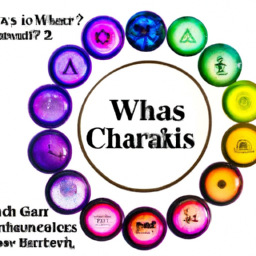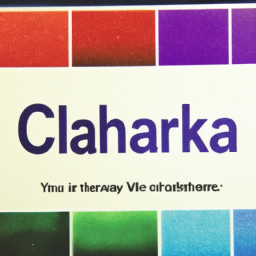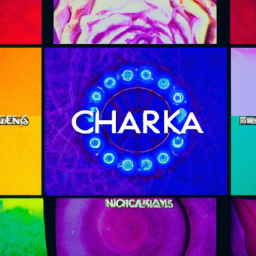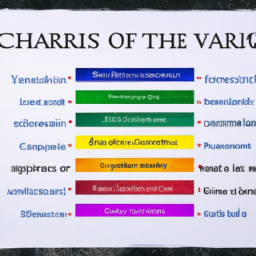The concept of chakras has been an integral part of spiritual practices for thousands of years. Originating in ancient Indian traditions, the concept of chakras refers to the belief that there are nine energy centers located throughout the body. These energy centers are thought to be connected to our physical, emotional, and spiritual well-being, and if they become imbalanced, it can affect our overall health and happiness.
The word chakra comes from the Sanskrit language, meaning “wheel” or “circle.” This is because the energy in each chakra is said to spin in a circular motion, creating a vortex of energy. Each chakra is also associated with a specific color, symbolizing its unique properties and functions.
So, what are the nine chakras and their significance? Let’s explore each one in detail.
1. Root Chakra (Muladhara)
The Root Chakra, also known as Muladhara, is located at the base of the spine and is associated with the color red. This chakra represents our sense of security, stability, and grounding. When this chakra is balanced, we feel connected to our physical body and the earth, and we feel safe and secure in our environment.
2. Sacral Chakra (Svadhishthana)
The Sacral Chakra, also known as Svadhishthana, is located in the lower abdomen and is associated with the color orange. This chakra is related to our emotions, sexuality, and creativity. A balanced sacral chakra allows us to express our emotions freely and enjoy healthy relationships.
3. Solar Plexus Chakra (Manipura)
The Solar Plexus Chakra, also known as Manipura, is located above the navel and is associated with the color yellow. This chakra is connected to our self-esteem, self-worth, and personal power. When in balance, we feel confident and in control of our lives.
4. Heart Chakra (Anahata)
The Heart Chakra, also known as Anahata, is located at the center of the chest and is associated with the color green. This chakra represents love, compassion, and forgiveness. When this chakra is in balance, we experience unconditional love for ourselves and others.
5. Throat Chakra (Vishuddha)
The Throat Chakra, also known as Vishuddha, is located at the throat and is associated with the color blue. This chakra represents our ability to communicate and express ourselves effectively and truthfully. A balanced throat chakra allows us to speak our truth with confidence.
6. Third Eye Chakra (Ajna)
The Third Eye Chakra, also known as Ajna, is located between the eyebrows and is associated with the color indigo. This chakra is associated with our intuition, perception, and spiritual awareness. When this chakra is balanced, we have a clear understanding of ourselves and our place in the world.
7. Crown Chakra (Sahasrara)
The Crown Chakra, also known as Sahasrara, is located at the top of the head and is associated with the color violet or white. This chakra connects us to our divine consciousness and represents our spiritual connection to the universe. When this chakra is balanced, we experience inner peace, bliss, and spiritual enlightenment.
8. Soul Star Chakra (Transpersonal or Super-conscious)
The Soul Star Chakra, also known as Transpersonal or Super-conscious, is located above the head and is associated with the color white, gold, or silver. This chakra is considered to be the gateway to our higher soul purpose and cosmic wisdom. It allows us to connect with our higher self and universal consciousness.
9. Earth Star Chakra (Subpersonal or Subconscious)
The Earth Star Chakra, also known as Subpersonal or Subconscious, is located below the feet and is associated with the color black. This chakra connects us to the earth, grounding us and keeping us balanced. It also aids in releasing old patterns and negative energy.
In conclusion, the chakras are vital energy centers that play a significant role in our physical, emotional, and spiritual well-being. By understanding and balancing these energy centers, we can achieve a state of harmony and alignment within ourselves and with the universe. Practicing meditation, yoga, and other spiritual practices can help maintain a healthy balance of chakras. Remember, each chakra is interconnected, and an imbalance in one can affect the others. So, it is essential to pay attention to all of them and work towards keeping them in harmony.





A great starting point to learning about this powerful energy system.
JanetRobinson: An excellent guide on getting to know your energy centres.
Beneficial101: Absolutely essential knowledge for spiritual growth!
This is invaluable information for improving your overall wellbeing.
An eye-opening article that can truly help boost mental, emotional, and physical health.